How to Raise Tadpoles
Are you teaching your kids about the frog lifecycle this spring? Do you know how easy it is to observe the life cycle in your very own home or classroom? This simple guide will give you everything you need to know on how to build an observational tank and raise tadpoles to observe the frog lifecycle at close hand.

One of the best ways for children to understand how things happen is by experiencing it. This science and nature activity for spring has always been one of my favourites. From doing it as a child on our nature table at home to in my high school science classroom when I taught biology and with my own kids as we homeschool. Children of all ages will love to see the frog eggs (frog spawn hatch) and then transform from tadpoles through to froglets to eventually be returned to the pond where we found them.
So if you are as inspired and want to raise your own tadpoles at home or in your classroom so your children can experience the wonder of the lifecycle of the frog in action.
Watch our video to discover what you will be able to observe following this guide.
Explore the frog lifecycle further with our collection of activities and other ideas to go along with raising frogs from tadpoles.
Spotting Frogs and Toads
Our first sign everywhere is the croaking that we hear usually on a warm sunny day as the frogs come out of their hiding places from winter hibernation. We made sure that we have a safe place for them to hibernate near the pond a couple of years ago with our Log Pile Home inspired by the book the Gruffalo.
Once the frogs have been spotted it’s Frog Spawn Watch time.
How to Collect Frog Spawn
Collecting the frogspawn is really easy but we are very careful to stress the safety aspects of it with the kids – Lay down on the ground with the net or plastic tub and make sure that we collect lots of the pond water as well.
Did you know in the UK it’s easy to tell the difference between Frog and Toad Spawn as well? – Frog Spawn in clumps whereas Toad’s lay in strings!
Once we have the spawn in a plastic tub I get the kids to write a little about the frog spawn that they see – we started doing this when my eldest was an older toddler and he would draw the frogspawn and then evolved it to more of a nature journal as he got older.
How to Raise Tadpoles
One of the most important aspects is to remember that chlorinated water can kill the tadpoles so if you need to change the water then use water from the pond you collected them from or use rainwater that you can collect easily this time of the year.
We use an old fish tank to create an observation habitat for our tadpoles. It also gets used to keep snails and caterpillars at different times of the year so that we can observe more nature.
When the children were younger I added a box of fun frog books to the side so that they could connect literacy with nature as well. You can see our daughter reading through a rhyming book with the tank infront her in the image above.
However, as they have got older we collected together a selection of books about the frog life cycle that start with simple explanations and then much more in-depth ones as they get older.
One of the questions we always get asked but isn’t it difficult to keep them alive! NO keeping the tadpoles alive is easy by following the instructions below.
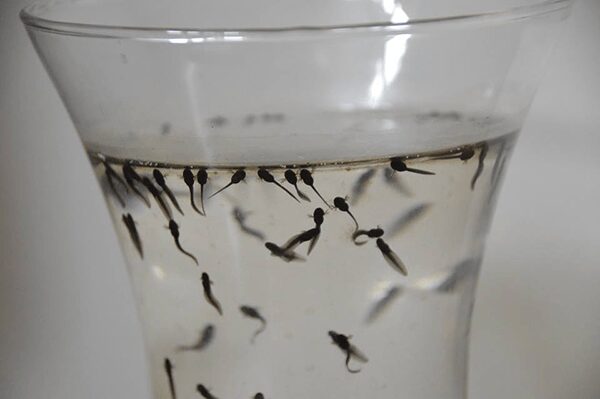
- Keep the frog spawn in the container in the shade away from direct heat but protected from frosts – in the UK we still can have some frosts well in May – you can, of course, have it in your home if you wish – do not put a lid on the container
- Watching the tadpoles develop in the eggs is great – if you have older children you could get them to record what they see as the process of going from a dot like in the image above to a tadpole look-alike is fairly quick in the eggs.
- When the tadpoles hatch you need to give them some food they LOVE lettuce and cucumber and the best way to serve it to them is boil the lettuce for 10 – 15 mins to break down the cell structure, then add the this to an ice cube tray (only a little) and some pond water and freeze then add a block to the water and the tadpoles will eat them. Discover in more detail what Tadpoles need to eat at different stages of development plus the recipes for DIY Tadpole Food.
- You can then watch the tadpoles develop their legs – this is a good time to release them back into the pond before they become fully formed frogs as they are less likely to jump out.
- You can return them at this stage to the pond where you found them – or if you wish you can start to form your own colony in your back garden pond by releasing them to your own pond.
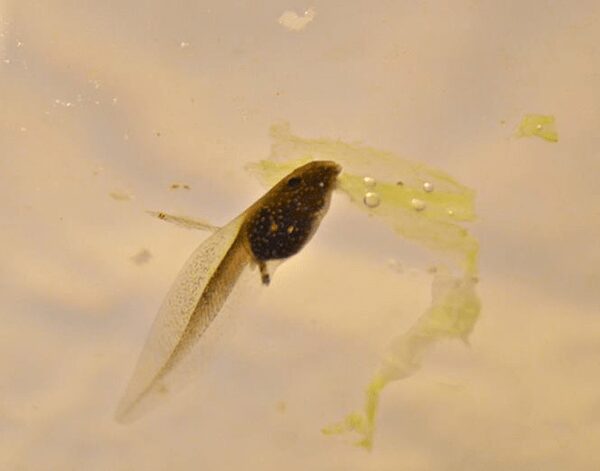
Get Your Tadpole Equipment Here
We have included affiliate links for products and resources we recommend, if you purchase through these links we may earn a small commission.
Your fish tank doesn’t need to be anything special these simple tanks without any filters are ideal for keeping the frog spawn and the tadpoles safe in our home or classroom. The handle makes it possible to take them with you to the pond to collect your frog spawn as well as then return to the tadpoles as they develop easily.
Although you can make your own tadpole food you can also purchase frog and tadpole pellets which are ideal for feeding your tadpoles as they develop and you watch them grow.
As well as our book selections listed above I also found it useful to have a model of the frog life cycle that my kids could use to “play” with and it provided a great talking point for discussing the life cycle further. This Safari Ltd Frog Life Cycle kit is ideal for kids to use.

You can of course make your own resources like this we made a set of Frog Life Cycle Story Stones so that our youngest could play and describe the frog story herself.
Ideas to link learning

- Measuring the tadpoles as they grow and recording the measurements to produce a graph over time
- Nature journaling with a timeline of development
- Comparing tadpoles raised inside with tadpoles in natural environment or in an outside tank – extend by recording the temperature of the water as well
More Nature Study Ideas for Kids





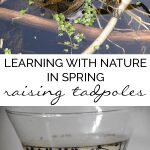
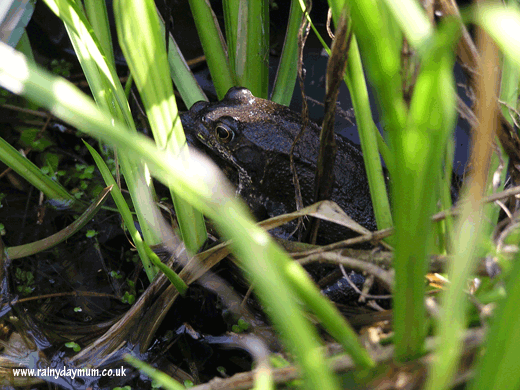

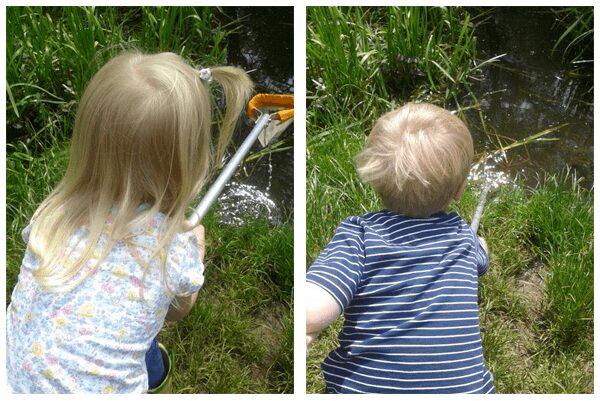

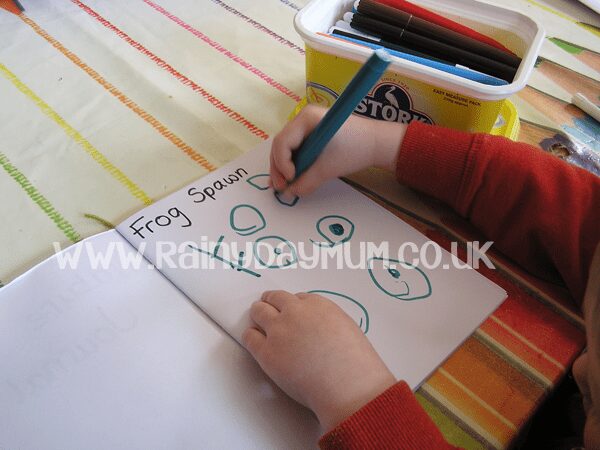

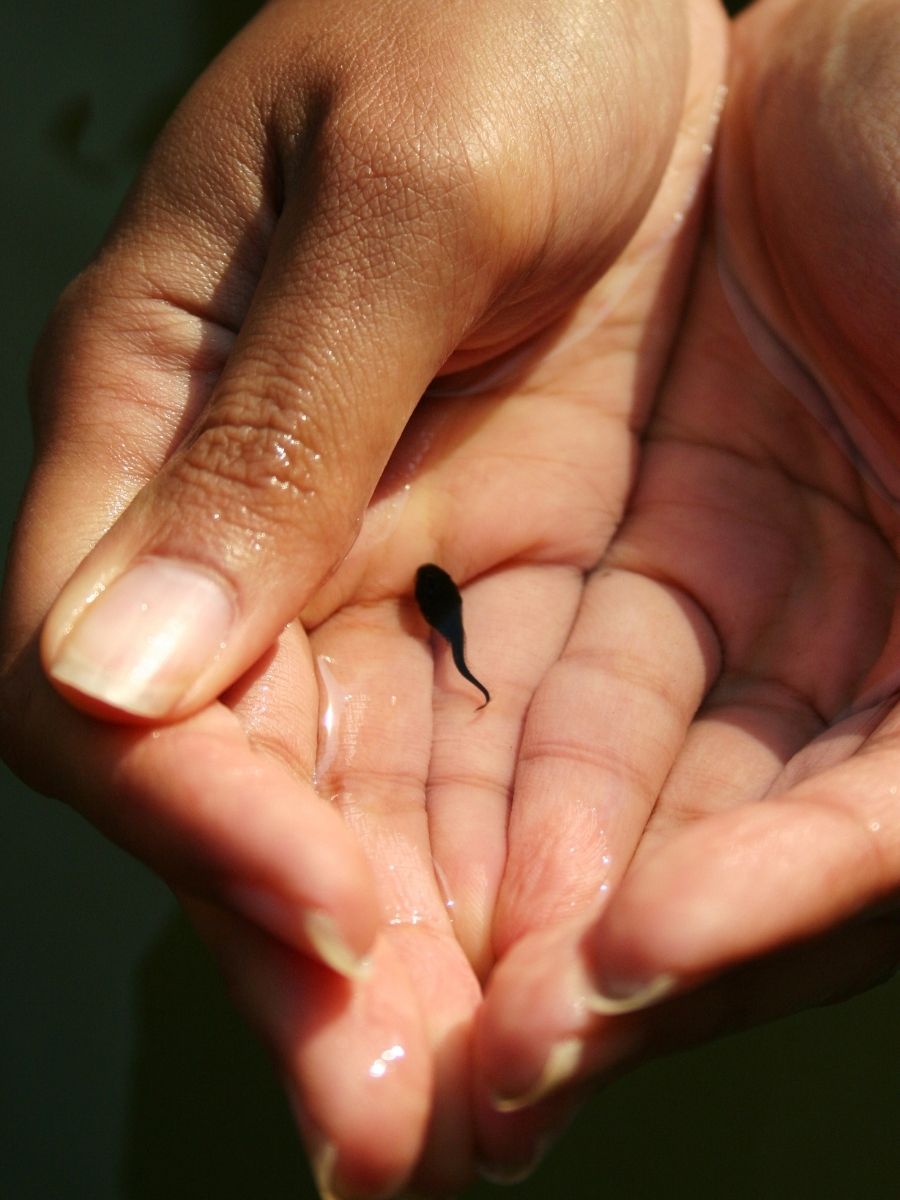
We bought a tadpole a few years ago but it didn’t make it very long. Last year we had Praying Mantis and we have an egg sac collected for this year already. Guess I better write a post about our experiences. I have been meaning to share and your post has inspired me to do so!
Oh I used to so love doing this as a child x
This is perfect for my youngest as frogs are spawning in my dad’s pond.Added this to the Brit Mums Spring Carnival.
Oooh I LOVE this activity and SO will my kids (how I love baby frogs). We are so going to try and do this this year!!!
Thanks for having me on the hangout too. Was great fun.
Maggy
We collected eggs last spring and even the dogs loved watching the tadpoles. It was a great learning experience for us all, and we released them back into the same pond we got them from afterwards. Thanks for the lovely photos and the reminder of a really fun time!